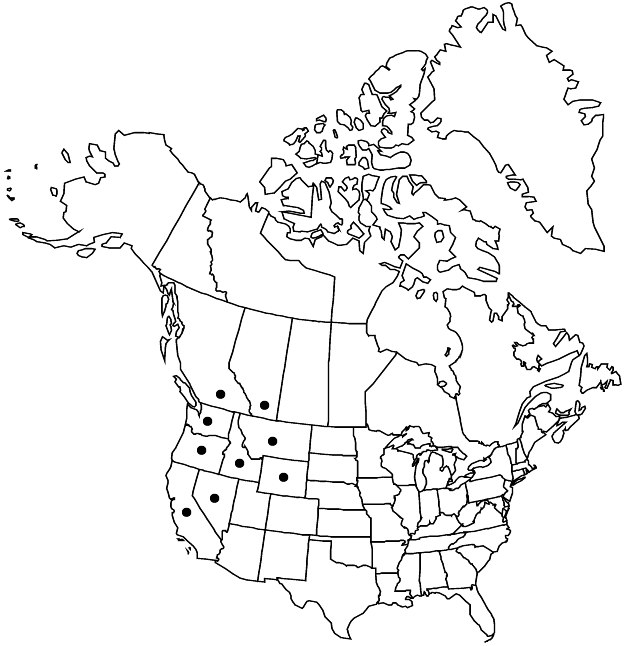Polygonum austiniae
Bull. Calif. Acad. Sci. 1: 212. 1885.
Herbs. Stems ascending to erect, green to purplish, much-branched from base, not wiry, 5–10 (–20) cm, papillose-scabridulous. Leaves uniformly distributed, articulated to ocreae, basal leaves persistent, distal leaves abruptly reduced to bracts, articulated to ocreae; ocrea 3–5 mm, papillose-scabridulous or glabrous, proximal part funnelform, distal part lacerate; petiole 0.1–2 mm; blade 1-veined, not pleated, ovate to elliptic or obovate, 5–15 × 4–7 mm, margins flat or narrowly revolute, papillose-denticulate, apex acute or mucronate. Inflorescences axillary and terminal, spikelike, slender; cymes spaced along branches, 1–4-flowered. Pedicels exserted from ocreae, reflexed, 1–2.5 mm. Flowers closed; perianth (1.8–) 2–2.6 mm; tube 20–28% of perianth length; tepals overlapping, green or purple, with narrow whitish margins, petaloid or sepaloid, oblong, cucullate, navicular, apex rounded; midveins unbranched; stamens 8. Achenes enclosed in perianth, black, elliptic to obovate, 2–2.5 mm, faces subequal, shiny, ± smooth.
Phenology: Flowering Jun–Sep.
Habitat: Dry to moist flats on banks, sagebrush plains, and ponderosa pine forests
Elevation: 1300-1600 m
Distribution

Alta., B.C., Calif., Idaho, Mont., Nev., Oreg., Wash., Wyo.
Discussion
Selected References
None.
Lower Taxa
"/2" is not declared as a valid unit of measurement for this property.